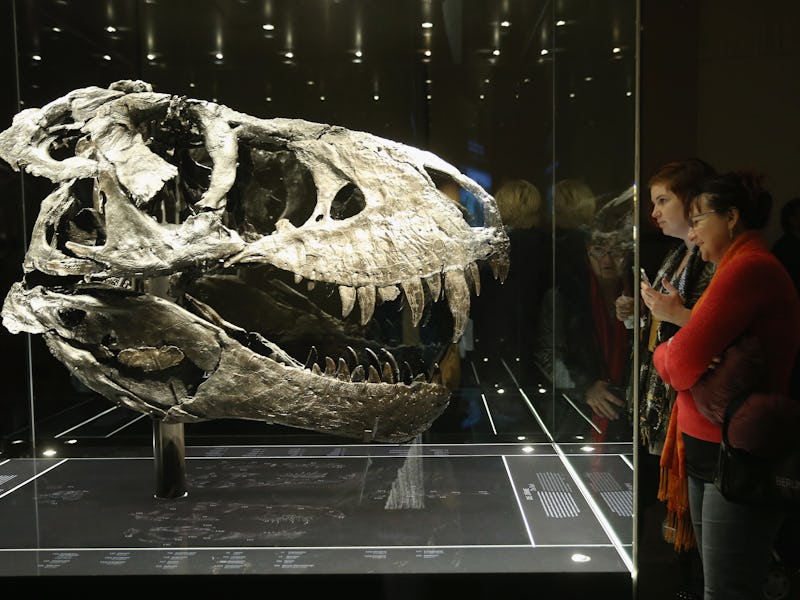Massive T. Rex Skull Unearthed in Montana
It's among the most complete ever found.

A rare Tyrannosaurus rex skull has been discovered by a team of paleontologists and volunteers in northern Montana. It’s one of only 15 reasonably complete known skulls of the tyrant lizard king in the world.
Two volunteers, Jason Love and Luke Tufts, were prospecting for dinosaurs when they saw a scattering of bone fragments falling out of a hillside. The bones were big and had the trademark honeycomb pattern of a large carnivore. After some digging into the sandstone it was clear that they were looking at the backside of a skull from a T. rex, the most iconic of the dinosaur predators.
The team was led by paleontologist Greg Wilson with the University of Washington and Burke Museum as part of the Hell Creek Project. The Hell Creek Formation lies in northeastern Montana and is particularly rich in fossils from the late Cretaceous period, near the end of the reign of the dinosaurs. The formation is very well studied by scientists, and the project aims to further unlock the secrets of life on Earth at that time and place.
It took a month and dozens of people to extract the skull from the hill where it had laid for 66 million years. The team had to move 20 tons of rock from above the fossil site before carefully digging away around the bone with hand tools. The crew carefully jacketed the skull in a plaster cast to protect it for transport to the museum. With all of the extra rock and plaster, the package weighs about 2,500 pounds.
The crew works to safely extract the T. rex skull from its resting place.
The skull is about four feet long, and belonged to an animal that lived to about the age of 15, based on its skull size. T. rexes are known to have lived to about 25-30 years old.
In the process of excavation, the team also found other bones — ribs, vertebrae, parts of the hips and pelvis — belonging to the same animal. Already, about 20 percent of the skeleton has been uncovered, making this among the 25 best-preserved T. rexes ever found. It’s likely that more remains in the hillside, waiting to found on next year’s dino dig.
The whole right side of the skull has been preserved, including teeth. The paleontologist won’t know if the left side is in there, too, until the plaster is removed and the rock carefully separated from the bone. It could take a year’s work to prepare the fossil.
The plaster cast containing the fossil will be on display at the Burke Museum in Seattle from August 20 to October 2. After that, technicians will get to work cleaning up the skull so scientists and the public can have a good look. The fossil could hold clues to how the giant predators ate, lived, and grew up. When sample sizes are so small, a single bone from a species can unlock many mysteries.
After preparation and study, the T. rex will go on display at the New Burke Museum when it opens in 2019. And if you’re looking to learn more about what life was like for the tyrannosaurs of Hell Creek, there will soon be a video game for that.